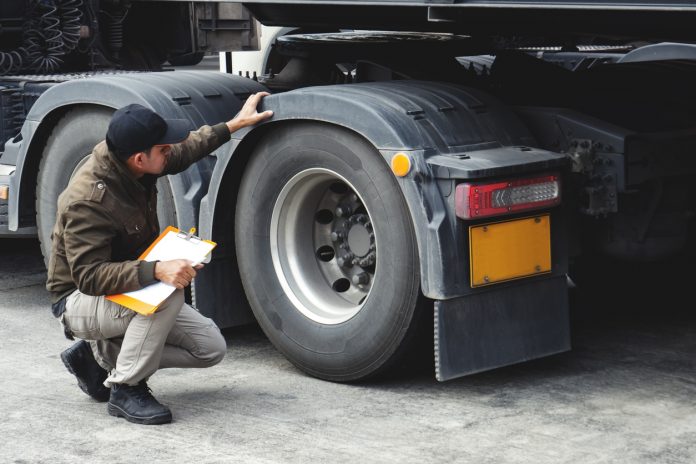Open scales are a regular part of our lives. There is simply no avoiding them. Most times, it’s a simple matter of driving across the plate, and you’re on your way. But there is always the chance you could be pulled around the back for an inspection. Avoiding all inspections is nearly impossible, but there are a few things you can do to minimize the chances of being selected for an inspection.
First and foremost, make certain your axle and gross weights are legal and within the limits of your license. You may have legal axle weights with a triaxle trailer, but if your truck isn’t licensed for triaxle weights, you can expect a ticket.
Be sure your axle spacing is legal. This can be tricky, as what is legal in one state or province might not be legal in another. The most common axle spacing issue is having the axles to the rear on a 53 ft trailer. This is only legal under very limited conditions, but some jurisdictions don’t enforce the rule, and some are very picky about it. As a rule, there can be no more than 41 ft between the kingpin and the center of the rear axle assembly. That being said, there can be no less than 37 ft from the kingpin to the center of the rear axle assembly. Again, these limits are not universally enforced. Check with the various jurisdictions to be sure you comply with the regulations.
Make sure your truck and trailer are in good physical condition. Old, unrepaired body damage could be seen as negligent operation, and the scale master will probably want to have a more detailed look to see what else may be wrong.
Make sure your International Fuel Tax Agreement (IFTA) is current and properly displayed on both sides of the truck, and that you have a valid copy of the IFTA license in your truck. Missing either the IFTA sticker or license is a violation.
If you’re transporting dangerous goods, make certain you are displaying the proper placards on all four sides of the trailer, and that your transportation of dangerous goods certification is valid. Also, make sure you have a copy of the transportation of dangerous goods handbook in the truck, and have the dangerous goods paperwork readily available for the inspector. The regulations require the paperwork to be within arm’s reach while you are in the driver’s seat. If you have to exit the truck during the inspection, the dangerous goods paperwork MUST be placed either on the driver’s seat or in the driver’s door pocket.
Make sure your load is within the legal limits for length, height, and width. A van trailer with bulging sidewalls can be ticketed as an oversized load, as it exceeds the 2.6-meter width. Granted, this is rarely enforced, but it could be the reason you’re pulled in for an inspection.
Make sure the registration and safety inspection stickers are up to date and valid, especially on the trailer.
Make sure all lights are properly operating, including the proper operation of the trailer’s ABS light. Check with your company’s maintenance department for the proper ABS light operation.
Attention to these details and a properly completed and documented pre-trip inspection will help ensure a DOT inspection is nothing more than a short time delay.



















